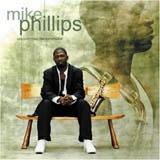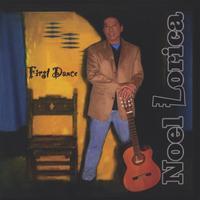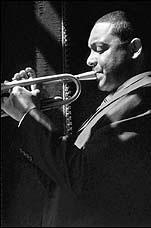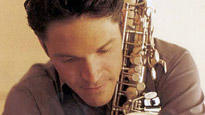As hurricane recovery efforts continue, some worry of cultural loss
By Stephen Kaufman
Washington File White House Correspondent
Washington -- New Orleans, the devastated but recovering city, forever will be associated with the birth of jazz music, the first original art form developed in the United States, which went on to spread across the continent and around globe during the 20th century.
As many are coming to terms with the human devastation caused by Hurricane Katrina along the U.S. Gulf Coast, many within the United States and around the world also are expressing concern over the fate of cultural icons and places critical to the development of New Orleans’ musical heritage.
Celebrated native personalities, such as jazz greats Branford Marsalis and Harry Connick Jr., and rock and roll Hall of Fame member Fats Domino, who was reported missing in the flood for several days before his rescue on September 2, are holding concerts to raise money for relief efforts.
HISTORIC SITES, ARTIFACTS
As the floodwaters recede, news reports are filtering in about the fate of famous musical venues.
Preservation Hall, a celebrated jazz club located in the middle of the French Quarter, apparently was spared, and its
Web site now is serving as a network to connect displaced New Orleans musicians.
However, the fairgrounds, which host the New Orleans Jazz and Heritage Festival every spring, barely have survived, and the roof reportedly has been torn off the grandstand.
In a September 1 article published by the Village Voice, musicologist Ned Sublette expressed alarm over the fate of artifacts and other primary historical items that catalogued the development of jazz music as an American art form.
"Everything from documents to recordings to things that are in private hands [are lost]. Many of the more serious archives are on higher floors -- presumably many of them have survived the floodwaters. But what condition are they in? How quickly will cultural workers be able to get in and rescue the patrimony which is very important in understanding where American music came from?” Sublette asked.
A NEW MUSICAL FORM
A little more than a century ago, there was no such music as jazz. The accumulated classical western musical tradition in the United States, while loved and respected, beautiful and complex, did not encourage improvisation or syncopated rhythms, and was often the exclusive purview of the privileged.
In Jazz: A Film By Ken Burns, which first aired on public television in 2001, director Ken Burns explored the history and development of this American music form from its beginnings through its more contemporary styles.
According to the film, jazz “grew up in a thousand places, but it was born in New Orleans, which was in the early 1800s the most cosmopolitan and the most musical city in America.”
Jazz ultimately was a combination of black music styles: Caribbean rhythms, the Baptist church call-and-response hymns, and slave work songs, along with some classical styles played by educated New Orleans Creoles -- people in the city of all races who shared a French or Spanish background -- who performed in brass bands and parades. The combination of all these styles led to ragtime and the blues, and ultimately to jazz.
Burns says the art of improvisation, one of jazz music’s defining characteristics, was partly due to the fact that African slaves, brought to a new land and confronting a new status, culture and language, had to improvise by necessity. “To survive in America, slaves needed to be able to incorporate everything they saw and heard around them, [and] had to find ways to make it all their own,” Burns said.
A BLEND OF MUSICAL CULTURES
When post-Civil War segregation in New Orleans forced the comparatively affluent Creoles more firmly into the African-American community, their musical cultures blended.
In adapting new styles during the late 19th century, military brass instruments, such as trumpets, that many Creoles were trained on, mimicked the former slaves’ church spirituals and blues in their tone and intonation. Thus, blacks and Creoles together invented a new style of music.
“Like the city that gave it birth, like the country that would soon embrace it, this new music would always be more than the sum of its parts,” the Burns film said.
With many of the city’s music venues located in Storyville, the local red light district, the new music started out with an association with the underworld – a connection that later would be enhanced during the 1920s Prohibition era when it would be performed in speakeasies which illegally served alcoholic beverages. The new music was called “jass,” reportedly from the jasmine perfume worn by prostitutes, and was shortly thereafter corrupted to its present form “jazz.”
As the locale for the birth of this new art form, of course, the first, and some of the most renowned jazz artists were New Orleans natives.
Buddy Bolden, a trumpet player, was the first musician celebrated for playing jazz. He invented the “big four,” a syncopated rhythm that became exclusive to the new form of music, and he led the first jazz band.
A young Creole pianist named Ferdinand Joseph La Mothe used to sneak away to play clubs in Storyville, telling his grandmother he was working as a night watchman. Rechristening himself as Jelly Roll Morton, he was the first jazz musician to put his compositions on paper. Once his grandmother discovered the 17-year-old was frequenting New Orleans’ red light district, Morten left home and began his life as a traveling performer.
Sydney Bechet, another Creole who played clarinet and soprano saxophone, has been called “the poet of New Orleans music.” Joining vaudeville shows touring the South and the Midwest, his playing style was characterized by vibrato and attack.
Joe “King” Oliver, a cornet player and band leader in Storyville, played in brass bands, dance bands and in various small groups in New Orleans bars and cabarets before leaving for Chicago in 1918.
And perhaps the most famous jazz artist of all, trumpeter Louis Armstrong, was born into poverty in 1901 in the violent section of New Orleans known as “The Battlefield.” As a boy, Armstrong led a band at a New Orleans waif’s home and played steamboats traveling up and down the Mississippi River before joining King Oliver’s band in Chicago and eventually achieving international stardom.
JAZZ EXPANDS
Jazz expanded as musicians left New Orleans for places such as Chicago, New York and Kansas City. The first ever recording by a jazz artist in 1917 brought the music to a wider, multiracial audience and expanded its popularity.
Gerald Early, a professor at Washington University in St. Louis, says in Burns’ film that one explanation for the music's spreading appeal is that it “was a way for people to break with the old.”
“Black people, when they invented this music, weren’t looking back to Africa. They were looking at America and looking at the future and looking at what they were as Americans. Europeans who came to this country were attracted to this music [and] found in this music a way to break free from Europe,” he said.
And jazz, as well as other forms of music, remained an integral part of New Orleans life thereafter.
"Music is part of the big three," said Jack Stewart, a member of the New Orleans Jazz Commission in a September 11 article published in the Pittsburgh Post-Gazette. "New Orleans is food, architecture and music. Everyone in New Orleans is a musician or has a relative who's a musician, whether they are professional or amateur."
Trumpeter Wynton Marsalis, who will perform at a benefit concert in New York September 17, told France’s Le Monde newspaper that he is hoping for international aid to help rebuild his devastated hometown.
But in the interview, published September 12, Marsalis said confidently, "New Orleans will be rebuilt," adding that money isn't the issue. "It's a question of will."
And perhaps partly as reassurance or even defiance, organizers of the New Orleans Jazz and Heritage Festival announced September 12 that the event indeed will take place in 2006. If it does not materialize in the ruined fairgrounds, “It will be as close to New Orleans as we can get it," producer-director Quint Davis told the New Orleans Times-Picayune.
For more information on the storm and its aftermath, see
Hurricane Katrina.Created:14 Sep 2005 Updated: 14 Sep 2005
usinfo.state.gov
Technorati tag:
Jazz
 Soulive is nothing if not a young jazz band of the people, playing on the road constantly, interacting with audiences graciously and regularly hosting musicians on stage and on tour. Yet this trio adamantly refuses to release albums that merely reflect its live act, which is a generously funky mix of pure improvisation over deep grooves seasoned with old-school soul, R&B, and contemporary beats.
Soulive is nothing if not a young jazz band of the people, playing on the road constantly, interacting with audiences graciously and regularly hosting musicians on stage and on tour. Yet this trio adamantly refuses to release albums that merely reflect its live act, which is a generously funky mix of pure improvisation over deep grooves seasoned with old-school soul, R&B, and contemporary beats. 
















